Electronic government service. The President instructed the government to improve the quality of electronic services
Issues of assessing the quality of provided state (municipal) services have an economic, political, and social aspect. Outsourcing the provision of state (municipal) services requires the use and effective methodology assessing the quality of services provided. On the other hand, in the process of selecting a task performer, the use of a methodology for assessing the quality and effectiveness of the performer is required. At the moment, there is no single and effective method for assessing the quality of outsourcing services. However, it is the “quality” category that does not come first when concluding an outsourcing agreement.
To ensure improved quality and accessibility of mass and socially significant public services Citizens of the Ministry of Economic Development of Russia conduct annual monitoring of the quality and accessibility of government services, as well as studies of the degree of satisfaction of citizens with the quality of activities of government authorities and bodies local government in terms of providing government municipal services and implementation of control and supervisory functions. In accordance with Decree of the President of the Russian Federation dated May 7, 2012 No. 601 “On the main directions for improving the system public administration» by 2018, the level of satisfaction of citizens of the Russian Federation with the quality of provision of state and municipal services should be at least 90%.
Monitoring and assessing the quality of services provided is a mandatory element in outsourcing processes.
A study conducted by the Outsourcing.ru portal revealed that “price is no longer the primary factor influencing the final decision. 52% of respondents answered that the cost of services is acceptable and corresponds to the declared level of quality. 31% expressed the opinion that prices are high, but the quality of services meets expectations. Thus, only 21% of respondents decided that savings were higher on the list of priorities than quality.” According to another study (Kuzbass Business Portal), 46% of respondents (26 respondents out of 57) had to change an outsourcer due to following reasons: 60% were not satisfied with the quality or level of service requests, 30% were looking for a lower price, 10% were due to other reasons.
The Ministry of Economic Development of Russia analyzed the results of monitoring the quality and availability of state (municipal) services for 2011. Let us present some results of this analysis. Answers to the question “How do you assess the quality of the provision of state (municipal) services?” showed the following picture (Fig.)
Figure 4.1 – Assessment of the quality of service provision by entrepreneurs and citizens as a result of the survey
During the research process, the Higher School of Economics assessed the level of satisfaction with the quality of government (municipal) services using two options
First option – Calculate the share of citizens who rate the quality of state (municipal) services as “Good” and “Rather good” (% of respondents). According to this method, 74.6%, including 65.7%, of respondents who applied for the service from organizations, and 75.7% of citizens who applied for the service in a personal capacity. This is a good indicator. The advantage of this technique is its simplicity, the disadvantage is that the opinion of many respondents who were not included in the survey is not taken into account.
The second technique is based on calculating a formula that takes into account the distribution of responses.
R=D 1 +D 2 +0.75D 3 +0.25D 4
Where D 1 is the share of those who rated “good”,
D 2 – share of those who rated “rather good”,
D 3 – share of those who found it difficult to answer,
D 4 – the proportion of those who rated it “rather bad”.
The results of the assessment of the submitted method are as follows: the overall level of satisfaction is 67.2 points out of 100, the level of satisfaction of entrepreneurs is 61.1 points, citizens are 68.0 points out of 100.
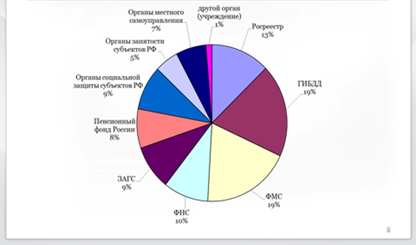
Figure 4.2 – State authorities (local self-government) to which respondents applied
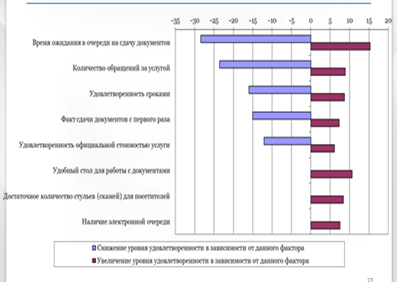
Figure 4.3 – Assessment of the influence of individual factors on citizens’ satisfaction with the quality of government (municipal) services.
The concept of outsourcing comes down to three basic principles: first, everyone should do their own thing and be able to concentrate only on it. The second is the solution of related
tasks should be entrusted to someone who can handle them better. Third, this distribution of work saves the customer money and generates income for the contractor.
To date, most government bodies have carried out certain work to identify redundant and duplicative activities, the advantages and disadvantages of the outsourcing model were assessed, however, some tasks continue to be performed ineffectively and not always at a high quality level. This is due to the fact that due to the lack of a methodology for assessing the effectiveness of third-party organizations and the imperfection Russian legislation, “unscrupulous contractors” are allowed to serve government agencies and perform business functions under outsourcing agreements
The main approaches to the selection of criteria for assessing the performance of third-party organizations when determining the best conditions for fulfilling a contract for the supply of goods, performance of work, and provision of services are set out in Federal Law No. 94-FZ. The criteria for evaluating and comparing applications here are the contract price (unit price of goods, services, etc.); functional characteristics (consumer properties) or quality characteristics goods; the quality of work, services and (or) qualifications of the competition participant when placing an order for work or provision of services; costs of operating the product; product maintenance costs; terms (periods) for supplying goods, performing work, providing services; the period for providing quality guarantees, works, services; the scope of providing quality guarantees for goods, works, and services. Developed instead of 94-FZ, Law No. 44-FZ establishes new requirements for the description of the procurement object, justification of the initial price of the contract, securing an application for participation in the procurement, evaluation of applications, as well as for procurement participants. These requirements will apply to all methods of identifying suppliers (contractors, performers).
The justification for the initial (maximum) contract price is regulated by Law No. 44-FZ in much more detail than by Law No. 94-FZ. Please note that the provisions on such justification will also apply to the price of a contract concluded with a single supplier (contractor, performer). Customers will be required to follow one or more of the following methods for justifying the initial contract price:
Method of comparable market prices (market analysis);
Normative method;
Tariff method;
Design and estimate method;
Costly method.
The priority is the method of comparing market prices, the rest can be used only in the cases specified in Parts 7 - 11 of Art. 22 of Law No. 44-FZ. When using the market price comparison method, the customer sets the initial (maximum) contract price based on information on market prices of identical goods, works and services planned for procurement, and in the absence of identical goods, works and services - homogeneous goods, works and services.
Law No. 44-FZ changes the criteria by which applications from participants in procurement procedures are evaluated. According to law 94-FZ, only one criterion is mandatory - the contract price. Now, when holding a competition, in addition to the contract price, the customer must use at least one more evaluation criterion established by Law N 94-FZ: quality of work, costs of operating the product, terms for providing a quality guarantee, etc. (part 4 of article 28 of Law N 94-FZ, clause 6 of the Rules for evaluating applications for participation in a competition for the right to conclude a state or municipal contract (civil contract budgetary institution) for the supply of goods, performance of work, provision of services for the needs of customers, approved by Decree of the Government of the Russian Federation of September 10, 2009 N 722).
Law No. 44-FZ contains a rule according to which the customer, when determining a supplier (contractor, performer) by any method other than an auction, will be required to apply at least two criteria, one of which must be price.
Thus, in addition to the contract price, Law No. 44-FZ specifies the following criteria:
Expenses for the operation and repair of goods, for the use of work results;
Qualitative, functional and environmental characteristics of the procurement object;
Qualifications of procurement participants, including their availability of financial resources, equipment and other material resources necessary for the execution of the contract, specialists and other workers of a certain skill level.
Such evaluation criteria as the period (periods) for delivery of goods, performance of work, provision of services, the period and scope of providing a guarantee of the quality of goods, work, services, are not specified in Law No. 44-FZ, in contrast to Law No. 94-FZ.
With regard to the contract price, it is established that the significance of this criterion should not be lower than the significance of the criterion of costs for the operation and repair of goods and for the use of the results of work (Part 5 of Article 32 of Law No. 44-FZ). If the state has established fixed prices for goods, work, services, then the customer has the right not to use the criteria of price and costs for the operation and repair of goods, for the use of the results of work (Part 8 of Article 32 of Law No. 44-FZ).
However, this interpretation also contains a number of shortcomings and inconsistencies, which we will analyze after considering the procedure for assessing the effectiveness of performers (third-party organizations) according to the criteria outlined above.
According to the current law, for the main types of orders (except for R&D), the significance of the two criteria “Quality of procurement” and “Qualification of the contractor” should not exceed 20%, and according to Resolution No. 722, the total significance of the criteria “Costs on components of life
cycle", "Terms...", "Warranty conditions" cannot also exceed 20%. Hence, the minimum significance of the “Contract Price” criterion cannot be less than 60%. Since the last three criteria vary slightly among different performers, the main “struggle” for highest level efficiency goes between “Price” (the importance of which increases) and “Quality of performers” (the importance of which cannot exceed 20%).
The new law has changed the significance of the criteria. So, the sum of significance
two criteria “Contract price” and “Expenses for life cycle» must be at least 50%, since the second component (according to Resolution No. 722) cannot be estimated at more than 10%, then the share
The “contract price” remains 40% (instead of 60% under the law 94-FZ). 50% remains for the remaining components, but the total importance of the deadlines for fulfilling orders and warranty obligations cannot be more than 10%. Thus, the total significance of the criteria “Order Quality” and “Qualification of Performers” increases to 40% versus 20% under 94-FZ and is equalized with the significance of the “Contract Price” criterion.
Neither Law 94-FZ nor the new Law 44-FZ define the methodological basis for calculating a comprehensive indicator for assessing the performance of the performer ( third party organization) when completing an order.
One more drawback should be noted. Legislative and accompanying documents do not establish maximum quality levels of criteria below which the performer should be recognized
unable to perform the functions of an order, even if the overall rating of this performer according to a comprehensive assessment of his effectiveness is the highest.
The specialized scientific literature offers various methods for assessing the effectiveness of a performer. The process of calculating a complex indicator for assessing the performance of the performer (third-party organization) can be presented in the form of a multi-level hierarchical system. The performers' places are ranked according to the value of the complex indicator; the first place goes to the one who has this indicator maximum value
Assessment of indicators in accordance with the Concept of reducing administrative barriers and increasing the accessibility of state and municipal services for 2011-2013, approved by Order of the Government of the Russian Federation of June 10, 2011 No. 1021-r, including:
· the number of applications by a citizen of the Russian Federation to the state (municipal) authority of the Russian Federation to receive one state (municipal) service;
· the number of requests from business representatives to the state (municipal) authority of the Russian Federation to receive one state (municipal) service related to the field of entrepreneurial activity;
· average waiting time in line when citizens of the Russian Federation apply to a state (municipal) body of the Russian Federation (minutes);
· the level of exceeding the established regulatory deadlines for the provision of state (municipal) services related to the field of entrepreneurial activity (percentage);
· the level of citizens' satisfaction with the quality and accessibility of state and municipal services provided directly by state authorities and local governments (percentages);
· level of citizens' satisfaction with the quality and accessibility of state and municipal services provided in the MFC (percent);
· other indicators formed on the basis of regular monitoring of the quality of provision of state (municipal) services and the performance of state and municipal functions;
· comparison of the obtained data with international ratings.
The quality of the services provided can also be indicated by such information as the valuation of citizens’ losses from poor-quality provision of government (municipal) services (Table)
To assess the quality of provision of government (municipal) services, scoring can be used to determine the rating of service providers. Here are the results of an analysis of the quality of provision of such a service as “Registration legal entity. When conducting this analysis, a rating was determined by cost of service and time, and then a consolidated rating by federal subjects (Table 4.1)
Table 4.1 - Cost estimate of citizens' losses from poor-quality provision of government (municipal) services
Decree of the President of the Russian Federation dated May 7, 2012 No. 601 “On the main directions for improving the public administration system” (hereinafter referred to as Decree 601) approved the indicators, the achievement of which by state authorities and local self-government is envisaged by 2018. In pursuance of the Presidential Decree, the city administration adopted an action plan that defines stage-by-stage (until 2020) levels of achievement of indicators (See Table 1):
At the level of business processes, control of strategic activities is carried out through the so-called key performance indicators or key performance indicators (KPI). These indicators are measures of the achievability of goals, as well as characteristics of the effectiveness of business processes and the work of each individual employee. In this context, the balanced scorecard system (hereinafter referred to as the BSC) is a tool not only for strategic, but also for operational management.
In the city administration, the BSC is divided into two time vectors: monthly assessment and annual assessment.
The activities of the city’s deputy mayors and heads of committees, departments and administration departments are assessed using an annual system of indicators. Annual indicators are determined based on the goals set by the Strategic Plan for Sustainable Development of the City of Khabarovsk until 2020.
In turn, a monthly assessment according to the balanced scorecard is carried out among all municipal employees and is implemented through the completion of a planning and reporting matrix by each employee. They take into account the weighting values of KPIs, constant and variable SMART tasks.
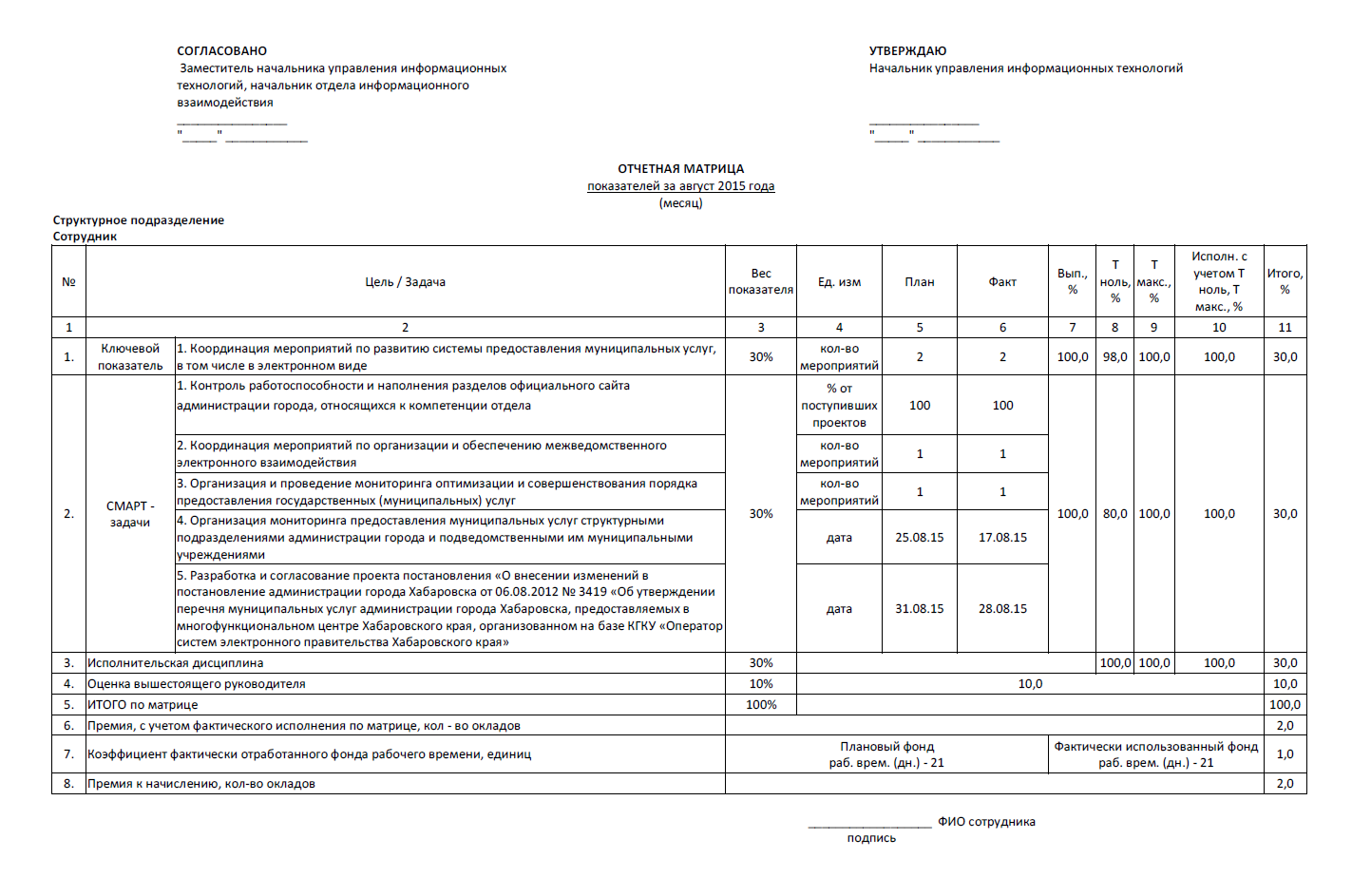
The final bonus coefficient is determined taking into account:
— boundaries for achieving indicators with minimum and maximum parameters, beyond which the bonus is not awarded;
— assessment of performance discipline;
- assessments of a senior manager;
- working hours actually worked by a municipal employee.
Variable indicators allow you to respond to new tasks without losing sight of the main direction of activity of the structural unit and the administration as a whole.
To implement a balanced scorecard system using monthly indicators (SMART tasks), the SMART automated control system, developed by the subordinate institution of the MBU MIAC, was introduced. This made it possible to automate the filling of planning and reporting matrices and monitor the implementation of planned indicators.
The SMART automated control system is built on the basis of a vertical hierarchy of indicators. For deputy mayors of the city, heads of structural divisions, KPIs and the corresponding SMART tasks are approved annually by order of the city administration.
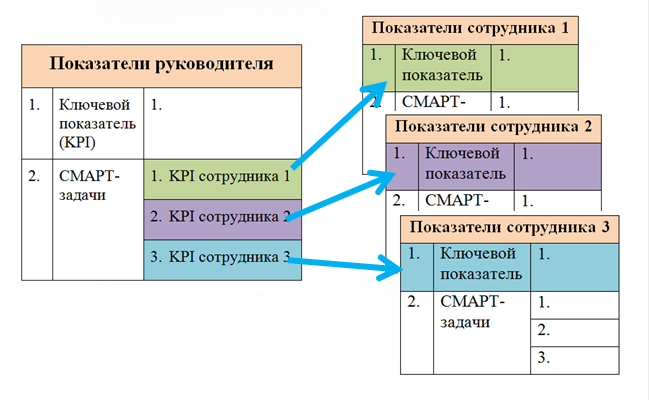
KPIs and permanent SMART tasks of employees are determined based on their job responsibilities and approved by order. SMART tasks of the city’s deputy mayors determine the KPIs of the heads of structural divisions responsible for the most significant areas of work. Accordingly, the permanent SMART tasks of department heads determine the KPIs of employees.
Thus, tasks for each employee are set in accordance with the general direction of activity of the structural unit in the current year.
The administration’s service portal contains internal services - both available for all structural divisions (AIS “SMART”, AIS “MED”, ACS “Requests”), and services developed for specific tasks of structures (AIS “Gosuslugi”, ACS “Dzhurny” , DB “Acts”, etc.), accordingly, they are displayed only by the management that is their user. Thus, the administration has ensured automation of standard management processes, and their technical support in real time.
ACS “SMART” is a tool for planning and monitoring employee activities. The system automatically calculates the bonus coefficient for each municipal employee based on the results of the assessments given by the manager and the days worked.
AIS "MED" (municipal electronic document management system) promptly informs the manager about violation of deadlines for the execution of documents, and also, with the help of generated reports, allows you to analyze performance discipline for a set time period.
AIS "State Services" ensures the transfer of services into electronic form and their provision to applicants on the city administration website and during a personal visit. The description of the service is posted on the Unified and Regional portals of state and municipal services in information system"Register of State Services", and authorization of applicants to receive services is carried out using the Federal Unified system identification and authentication (USIA).
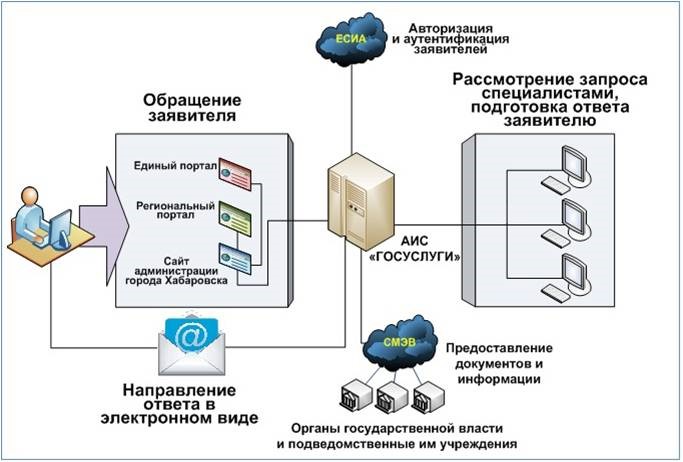
Development of provision in electronic form new services and changes to the procedures for providing existing services are carried out by management employees. For each new service, the “constructor” of the system generates a set of documents provided for by the regulations, taking into account specific “life situations”.
After this, performers have the opportunity to accept documents - in electronic form or during a personal appeal from the applicant, inform him about the stages of execution, receive documents from federal authorities through SMEV and send the result of the service to the applicant.
AIS "MED" together with AIS "State Services" are an integral part of the system for providing municipal services, simplifying and ensuring the movement of documents, monitoring the adoption of regulations that are the result of the provision of municipal services.
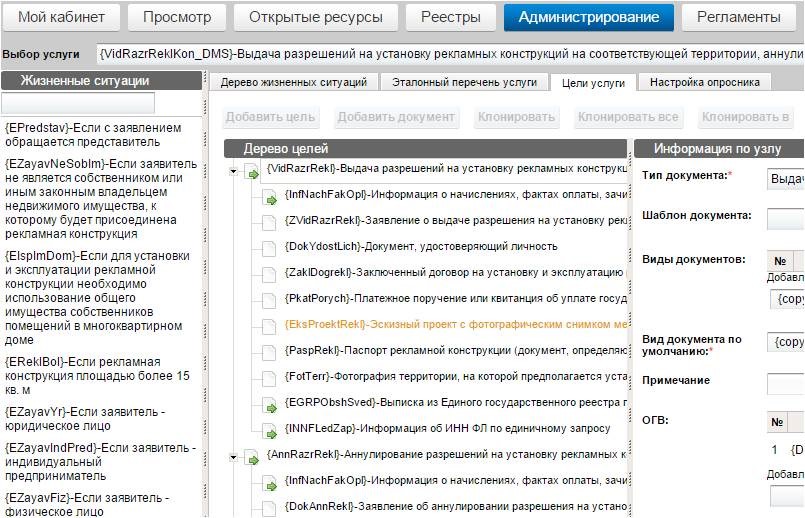
The effectiveness of the activities of deputy mayors and heads of structural divisions of the administration based on the results of work for the year is assessed by achieving the value of the indicator “Level of population satisfaction with the quality of provision of state and municipal services”, approved by Decree 601.
Of course, assessing satisfaction with the quality of provision of municipal services implies the presence feedback with consumers of services and is determined based on the results of a sociological survey of the population.
At the same time, public opinion is studied in the industries in which these services are provided. In 2013, the survey was conducted on the official website of the Khabarovsk administration; in 2014 and 2015 – on the website of the information agency “Khabarovsk. Open City."
According to the results of a survey of residents of the regional center, the level of satisfaction with the quality of services in 2014 was 84% (with set value at least 70%).
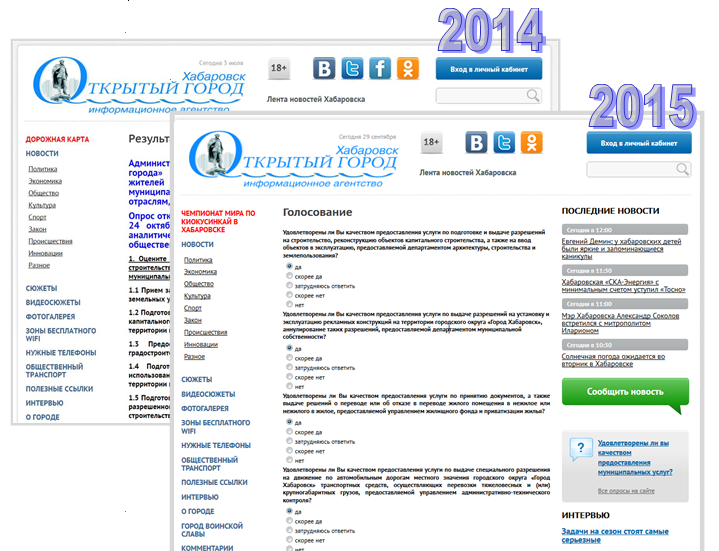
In assessing the effectiveness of managers, there are also other indicators approved by Decree 601:
1) “Waiting time in line when an applicant applies to a local self-government body to receive a municipal service”;
2) “The share of citizens who have access to receive state and municipal services on the principle of “one window” at their place of residence, including in the MFC”;
3) “The share of citizens using the mechanism for receiving state and municipal services in electronic form”;
4) “Reducing the average number of requests from representatives of the business community to local government to receive one municipal service related to the field of business activity.”
To ensure the fulfillment of these indicators, the main areas of work are: regulation and standardization of services, their provision in electronic form, interdepartmental electronic interaction, transfer of municipal services for provision to the MFC, monitoring the timing and quality of service provision.
Determination of target indicators for assessing the effectiveness of the activities of municipal employees of higher and higher main groups positions allows us to orient structural units to improve the quality level of their activities. As the planned values are achieved, the indicators set for managers are revised and new goals and objectives are set.
The use of the SMART automated control system allows for constant monitoring of the process of providing municipal services through the achievement of specified monthly and annual development indicators and improves efficiency municipal government generally.
The opinion of the editors may not coincide with the opinion of the authors presented in the “Experts” section
A systematic understanding of quality reflects the definition given in the Great Soviet Encyclopedia: “Quality is the essential certainty of an object or process, appearing in its properties and characterizing the fact that this object or process appears in given conditions, in connection and interaction with other given objects and processes " The above definition shows that quality is the essence of a thing, the basis of all its properties, and the “set of properties” is manifested in the relationship of a given thing with other things.
Currently, the Russian Federation has a number of state and international standards regulating the concept of quality. A comparative analysis of the terminology established in the listed standards shows that there are certain differences both in methodological approaches to quality and in the interpretation of basic concepts. Table 1 shows the main definitions of quality.
An integral understanding of quality, focusing on a synthetic, holistic coverage of all its aspects, became possible with the development of market relations. Today, when we talk about quality, we mean the general consumer assessment of the properties of goods or services, which includes all the factors that influence the choice of a supplier of goods or services by the consumer, and, therefore, implies an expanded interpretation of the concept of “quality.”
Internationally recognized expert in the field of quality E. Deming writes: “The consumer is the most important link in the production line. Quality must be aimed at meeting its needs - present and future."
Table 1 – Basic definitions of the concept “Quality”
|
GOST 15476-79 |
Definitions adopted in ISO standards |
|||
|
ISO 8402 (1993 draft) |
ISO 8402: 1994 | |||
|
Product quality is a set of product properties that determine its suitability to meet certain needs in accordance with its purpose. |
Quality is a set of properties and characteristics of a product or service that give it the ability to satisfy stated or expected needs. |
Quality is a set of characteristics of an object that give it the ability to satisfy stated or expected needs |
Quality is a set of characteristics of an object related to its ability to satisfy established and expected needs |
Quality is the degree to which the totality of its own characteristics fulfills the requirements* |
* Requirement - a need or expectation that is stated, usually assumed, or required. Requirements may be made by various stakeholders.
State (municipal) services are services that are provided to individuals and organizations at their request by federal executive authorities, executive authorities of the constituent entities of the Russian Federation, management bodies of state extra-budgetary funds of the Russian Federation or local administrations within the scope of their competence.
Federal Law of the Russian Federation dated July 27, 2010 N 210-FZ “On the organization of the provision of state and municipal services” regulates relations arising in connection with the provision of state and municipal services, respectively, by federal executive authorities, bodies of state extra-budgetary funds, and executive authorities of government. subjects of the Russian Federation, as well as local administrations and other local government bodies exercising executive and administrative powers.
According to this law, a public service provided by a federal executive body, a body of a state extra-budgetary fund, an executive body of state power of a constituent entity of the Russian Federation, as well as a local government body in the exercise of certain state powers delegated by federal laws and laws of constituent entities of the Russian Federation is an implementation activity functions, respectively, of a federal executive body, a state extra-budgetary fund, an executive body of state power of a constituent entity of the Russian Federation, as well as a local government body in the exercise of certain state powers delegated by federal laws and laws of constituent entities of the Russian Federation, which is carried out at the request of applicants within the limits established by regulatory legal acts of the Russian Federation and regulatory legal acts of the constituent entities of the Russian Federation powers of bodies providing public services.
Municipal service, provided by a local government body - activities to implement the functions of a local government body, which is carried out at the request of applicants within the powers of the body providing municipal services to resolve issues of local importance established in accordance with Federal Law of October 6, 2003 N 131-FZ " On the general principles of organizing local self-government in the Russian Federation" and the charters of municipalities.
Administrative regulation is a normative legal act that establishes the procedure for the provision of state or municipal services and the standard for the provision of state or municipal services.
A multifunctional center for the provision of state and municipal services is a Russian organization, regardless of its legal form, authorized to organize the provision of state and municipal services, including in electronic form, according to the “one window” principle.
Provision of state and municipal services in electronic form - provision of state and municipal services using information and telecommunication technologies, including using the portal of state and municipal services, multifunctional centers, universal electronic cards and other means, including the implementation of electronic interaction within the framework of such provision between state bodies, local governments, organizations and applicants.
Portal of state and municipal services - a state information system that ensures the provision of state and municipal services in electronic form, as well as access of applicants to information about state and municipal services intended for distribution using the information and telecommunications network "Internet" and posted in state and municipal information systems that ensure the maintenance of registers of state and municipal services.
Along with the term “public services”, you can often find another one - “public services”, and often both of these terms are used in the same context, in relation to the same situations. As a result, the concept of public services, which is already not entirely clear due to its novelty, further loses its contours, merging with public services. To a certain extent, translations of foreign materials on these issues are also to blame for this, when “public service” is translated both as “public” and “state” services. If we add to this series “social” services, which are also part of our lives, then a situation arises when it is difficult to distinguish between state, public and social services.
It seems that it would be wrong to confuse these concepts, since they have different contents and different sides characterize the services provided. At the same time, it would also be wrong to oppose them. The same service can in some cases be state, public, and social. A public service, first of all, characterizes the entity providing the service: these are always government bodies. Local governments can provide similar government services, but, strictly speaking, such services cannot be considered as government services, based on the constitutional status of local governments.
The basic principles for the provision of state and municipal services are:
1) the legality of the provision of state and municipal services by bodies providing state services and bodies providing municipal services, as well as the provision of services that are necessary and mandatory for the provision of state and municipal services and are provided by organizations specified in part 2 of Article 1 N 210- Federal Law "On the organization of the provision of state and municipal services";
2) the application procedure for applying for the provision of state and municipal services;
3) the legality of collecting from applicants a state fee for the provision of state and municipal services, fees for the provision of state and municipal services, fees for the provision of services that are necessary and mandatory for the provision of state and municipal services;
4) openness of the activities of bodies providing public services and bodies providing municipal services, as well as organizations involved in the provision of state and municipal services;
5) accessibility of applying for the provision of state and municipal services and the provision of state and municipal services, including for persons with disabilities disabilities health;
6) the possibility of receiving state and municipal services in electronic form, unless prohibited by law, as well as in other forms provided for by the legislation of the Russian Federation, at the choice of the applicant.
When receiving state and municipal services, applicants have the right to:
1) receipt of state or municipal services in a timely manner and in accordance with the standard for the provision of state or municipal services;
2) obtaining complete, up-to-date and reliable information on the procedure for providing state and municipal services, including in electronic form;
3) receiving state and municipal services in electronic form, unless prohibited by law, as well as in other forms provided for by the legislation of the Russian Federation, at the choice of the applicant;
4) pre-trial (out-of-court) consideration of complaints (claims) in the process of receiving state and municipal services;
5) receiving state and municipal services in a multifunctional center in accordance with agreements concluded between multifunctional center and bodies providing public services, and agreements concluded between the multifunctional center and bodies providing municipal services, from the moment the relevant interaction agreement comes into force.
Responsibilities of bodies providing public services, bodies providing municipal services, and organizations subordinate to state bodies or local governments:
1. Bodies providing public services and bodies providing municipal services are obliged to:
1) provide state or municipal services in accordance with administrative regulations;
2) ensure the opportunity for the applicant to receive state or municipal services in electronic form, unless prohibited by law, as well as in other forms provided for by the legislation of the Russian Federation, at the choice of the applicant;
3) provide to other bodies providing public services, bodies providing municipal services, to organizations subordinate to state bodies or local governments involved in the provision of state and municipal services provided for by law, upon interdepartmental requests of such bodies and organizations, documents and information necessary for provision of state and municipal services;
4) perform other duties in accordance with the requirements of administrative regulations and other regulatory legal acts governing relations arising in connection with the provision of state and municipal services.
2. Organizations subordinate to state bodies or local self-government bodies participating in the provision of state and municipal services are obliged to:
1) provide to bodies providing state services and bodies providing municipal services, at interdepartmental requests of such bodies, documents and information necessary for the provision of state and municipal services, as well as receive from bodies providing public services, bodies providing municipal services, other state bodies, local governments such documents and information;
2) perform other duties in accordance with the requirements of N 210-FZ “On the organization of the provision of state and municipal services” and other regulatory legal acts governing relations arising in connection with the provision of public services.
The provision of state and municipal services is carried out in accordance with administrative regulations.
The structure of administrative regulations must contain sections establishing:
1) general provisions;
2) standard for the provision of public services;
3) composition, sequence and timing of administrative procedures, requirements for the procedure for their implementation, including features of the implementation of administrative procedures in electronic form;
4) forms of control over the implementation of administrative regulations;
5) pre-trial (out-of-court) procedure for appealing decisions and actions (inaction) of a body providing a public service, a body providing a municipal service, as well as officials, state or municipal employees.
The standard for the provision of state or municipal services provides for:
1) name of the state or municipal service;
2) the name of the body providing the public service or the body providing the municipal service;
3) the result of providing a public service;
4) the period for providing state or municipal services;
5) legal grounds for the provision of state or municipal services;
6) an exhaustive list of documents required in accordance with legislative or other regulatory legal acts for the provision of state or municipal services, divided into documents and information that the applicant must submit independently, and documents that the applicant has the right to submit on his own initiative, since they are subject to representation within the framework of interdepartmental information interaction;
7) an exhaustive list of grounds for refusal to accept documents necessary for the provision of state or municipal services;
8) an exhaustive list of grounds for refusal to provide state or municipal services;
9) the amount of fees charged to the applicant for the provision of state or municipal services, and the methods of collection in cases provided for by federal laws, adopted in accordance with them by other regulatory legal acts of the Russian Federation, regulatory legal acts of constituent entities of the Russian Federation, municipal legal acts;
10) the maximum waiting period in line when submitting a request for the provision of a state or municipal service and upon receiving the result of the provision of a state or municipal service;
11) the deadline for registering the applicant’s request for the provision of state or municipal services;
12) requirements for the premises in which state and municipal services are provided, for the waiting room, places for filling out requests for the provision of state or municipal services, information stands with samples of their completion and a list of documents required for the provision of each state or municipal service;
13) indicators of accessibility and quality of state and municipal services;
14) other requirements, including those taking into account the specifics of the provision of state and municipal services in multifunctional centers.
Public services are classified according to the following criteria:
- organizational and legal status of the public service provider;
- organizational and legal status of the consumer of public services;
- form of provision.
According to the organizational and legal status of the public service provider, the following groups are distinguished:
Services provided to consumers directly by government agencies;
Services provided to consumers by government agencies that are not government agencies, whose activities are financed from the state budget;
Services provided to consumers by public and private organizations that have won public procurement tenders for their targeted implementation.
According to the organizational and legal status of the consumer of public services, the following groups are distinguished:
Services provided to individuals;
Services provided to legal entities.
According to the form of provision, the services provided are distinguished:
On paper;
Through information and communication means;
On an electronic storage medium;
Orally in direct contact.
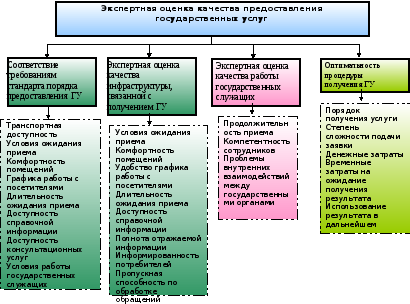
Figure 1 –
Figure 7 - Components of an objective indicator of the quality of public service provision
Indicators of accessibility and quality of public services are determined to evaluate and monitor the activities of both public service providers in general and individual officials. Common indicators for all services are accuracy and timeliness of execution, accessibility, costs of their implementation, and the presence of justified complaints. The composition of accessibility and quality indicators is divided into two main groups: quantitative and qualitative.
The group of quantitative indicators of accessibility, which are characterized by measurable indicators that make it possible to objectively evaluate the activities of public service providers, includes:
Service waiting time; the institution's work schedule;
Location of the institution providing the services;
Number of documents required to receive the service;
Cost of the final result of the service (for paid services);
Availability of benefits for certain categories of service consumers.
Qualitative indicators of the availability of services provided include: the degree of complexity of the requirements that must be met to receive the service; reliability of information about the services provided; availability various channels receiving services; simplicity and clarity of information and instructional documents.
The group of quantitative indicators for assessing the quality of services provided includes: compliance with the deadlines for the provision of services; number of justified complaints.
Qualitative indicators include: accuracy of fulfilled obligations towards the consumer; service culture (politeness, aesthetics); quality of staff work results (professional excellence).
Both in our country and abroad, the provision of public services is closely associated with the public service. And this is no coincidence, because the state provides services through a special apparatus - civil servants. Already in the Concept of reforming the civil service system of the Russian Federation, approved by the President of the Russian Federation on August 15, 2001, it was established that interaction between the civil service and civil society is carried out on the basis of compliance, in particular, with the principle of legality and legal regulation of the activities of government bodies and civil servants, eliminating the possibility manifestations of subjectivity and avoidance of arbitrariness when civil servants provide public services and make decisions.
To determine the gap in the existing Russian experience in developing public service standards, it is useful to compare this experience with the best global practices. The Marianne Charter (France) was used as an object of comparison, which contains not only the standard of public services itself, but also recommendations for its implementation. The document is a methodological guide intended for persons whose responsibilities include the application and monitoring of compliance with service standards. The charter is aimed at improving the quality of service and reception of the population in government institutions.
The Marianna Charter, in contrast to the Russian experience, contains not only the parameters of the minimum acceptable quality, but also a process of continuous improvement than it is significantly to a greater extent complies with the approach of the ISO-9000 series standards.
Russian standards are more similar in style to instructions, although attempts to develop a different style are made by all developers of the standards considered. The unity of the Charter made it possible to devote a significant place in its implementation to the exchange of experience, including between bodies providing completely different public services (different ministries). In Russia, the diversity of approaches, including simply due to different functional terminology and unique stylistics, complicates the conditions for the exchange and dissemination of OIV experience.
The unity of the Charter is potentially convenient for recipients of services, since the unity of the structure makes it easy to navigate and find necessary information as standard for any service.
Russian standards are not yet so focused on service recipients; there are even proposals to create special adapted versions of standards for distribution.
The Charter consists of mandatory, additional and special conditions. Mandatory conditions must be fulfilled by everyone, but the form of execution may vary. To do this, the Marianna Charter has specially marked spaces for filling out specific compliance forms (templates), for example: “We inform you of our opening hours: (must be specified).” Additional conditions are not mandatory, they are a kind of recommendation for improvements. Government agencies may adopt other additional requirements appropriate to the nature of the service. In Russian practice, an approach with different levels of requirements was found only in one case. The existing domestic experience does not yet contain a focus on continuous improvements. In fact, standards are intended to set the level that needs to be achieved, and this is where the improvement process ends. The charter is written in the form of a template. The studied Russian experience also contains preferences for the formulation of a basic text with a unified structure, with further adaptation of the standard to the specifics of individual services.
An analysis of regional experience in standardizing the services of executive authorities suggests that the issue of correlating the processes of standardization and regulation of government bodies is currently unresolved. In fact, the regions have not yet begun to implement measures to develop administrative regulations. In a very limited number of cases, for example in the program of the Samara region, there is an indication of the formation of administrative regulations as a mechanism for changes in the activities of executive authorities.
At the same time, the regulatory framework of the Russian Federation regarding certain aspects of administrative reform determines the connection between administrative regulations and standards of public services, as, for example, in Government Decree No. 679 of November 11, 2005 “On the procedure for the development and approval of administrative regulations for the performance of public functions and administrative regulations for the provision of public services.” The process of regulating the activities of executive authorities includes:
Requirements for the procedure for providing public services, as part of the administrative regulations;
Mandatory independent examination and public discussion of administrative regulations;
Conducting surveys of recipients of public services as part of the technological chain for developing standards.
The connection between service standards and administrative regulations for the activities of executive authorities has been explicitly discovered in the practice of the activities of executive authorities in Tatarstan.
The Republic of Tatarstan uses the approach of including public service standards into a set of administrative regulations.
The Center for Economic and Social Research of the Republic of Tatarstan developed and submitted to the Cabinet of Ministers of the Republic of Tatarstan a draft resolution “On the development of a system of administrative regulations for the provision of public services by executive bodies of state power.”
In accordance with this approach, an administrative regulation is a normative legal act that establishes the procedure for the implementation by an executive authority of a state function related to the provision of public services. Part of the administrative regulations of the state function related to the provision of public services is the public service standard.
A public service is understood as the activity of an executive authority to fulfill the request or requirement of citizens and organizations for the recognition, establishment, change or termination of their rights, as well as obtaining material and financial resources for their implementation in the case and in the manner prescribed by law, establishing legal facts, or providing information on issues within the competence of the executive body of state power and included in the register of public services.
The standard of a public service refers to mandatory rules that establish, in the interests of the recipient of a public service, requirements for the provision of a public service, including characteristics of the process, form, content and result of the provision of this public service.
Known various models classifications of functions and powers of government organizations adopted in countries such as the USA, Canada, Germany and a number of other countries.
Canada has adopted a model of government activity, The Government of Canada Strategic Reference Model (GSRM), which divides government services not only into areas (areas), such as healthcare, education, and so on, but also into types in terms of the final results of service delivery. This is a fairly useful classification from the point of view of implementing e-government information systems, since the type of final result largely determines the nature and specificity of the technologies required for implementation.
The 19 types are listed below according to the Canadian classification of service outcomes:
funds: receiving or providing funds;
(Units of) resources: provision of goods, equipment, premises;
transportation: people and other objects;
consulting;
matching detection, referrals and connection discovery;
new knowledge: performing research;
protection and stimulation;
recreational and cultural opportunities;
education and training;
rehabilitation and care;
period of validity of the agreement: reaching agreements, resolving disputes;
period of validity of the permit: regulation, licensing, issuance of permits, certificates, etc.;
period of protection: monitoring, prevention, elimination of threats, risk reduction;
intervention: responding to threats and emergencies, providing assistance, restoring order;
compliance with rules and court decisions;
fines and sanction periods;
rules (laws, rules, strategies, plans, standards);
implementation of changes (organizations, work rules, systems).
In turn, the activities of the state are divided into 22 areas, which are divided into two large groups:
public services and functions of the state (Public Program Types) - 12 types of functions;
providing public services (Provider Program Type) – 10 types of functions.
Public services include the following categories:
socio-economic development;
science and knowledge generation;
natural resources;
environmental protection;
healthcare;
lawmaking, democratic and human rights;
social sphere;
culture;
education;
security and law and order;
judiciary;
national security and defense.
The following areas of state activity include:
rule-making (public regulation), planning and management;
administrative and economic management;
human resources (personnel) management;
financial management;
information and technology management;
management of assets, funds, buildings, etc.;
communications management;
procurement and supply management;
administrative services;
professional services.
As a result, the model for the provision of public services in Canada can be presented as follows (Fig. 8).
Line of business (functions) describe the authority to achieve results in a specific area. The description of the government's activities includes:
target group;
needs of the target group (addressed through program implementation);
regulatory support (scope and level of authority granted to achieve results);
performance results and their impact (the desired trend in the level of fulfillment of needs and the consequences of this);
efficiency and effectiveness indicators;
strategy model;
responsibility for implementation.
The description of the activities sets the context for the provision of services.
Areas of activity can be grouped according to the principles of serving similar target groups and similar needs.
Classification of services by areas of activity and types of results allows us to build a matrix of “areas of activity (functions) – types of services,” as shown in the figure below. At the intersection, the number of public services that relate to this direction and type is indicated.
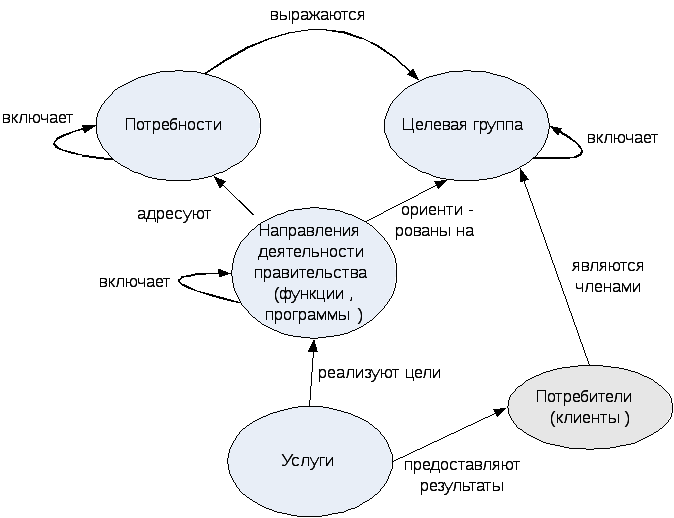
Figure 8 - Canada's public service delivery model
Of interest is the model for classifying public services, which was proposed by the consulting company “Booze, Allen, Hamilton” and which was accepted with minor changes in Germany. This classification has proven its usefulness. The German Federal Government has identified approximately 400 services.
The classification proposed in Germany takes into account two criteria:
the first criterion is the “Depth” of coverage by the “added value chain” service: information service– communications – transactions. This is a well known and widely used scheme. It is estimated that approximately one third of services are primarily informational in nature, however, in many cases these services include some additional functionality beyond simply publishing information on the Web. Another third are procedures for processing various applications, which generally require the implementation of complex processes and regulations and contain transaction execution components;
the second criterion is the content of the service.
It is interesting that almost 3/4 of all services of the German Federal Government (73%) belong to services of types 1, 2, 6 and 7: “Collection, processing and provision of general and specialized information”, “General procedures for processing applications received by government departments” ", "Procedures for providing assistance and assistance."
This classification of public services makes it possible to analyze to a greater extent what kind of technical solutions and IT infrastructure are required to provide them, and to reuse elements of these solutions.
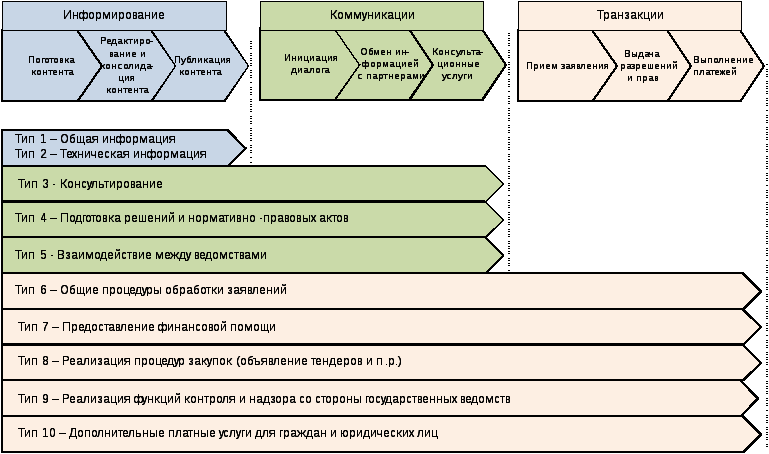
Figure 9 - Classification of public services proposed by Booze, Allen, Hamilton, adopted in Germany
It is very important to set the right priorities in the sequence of implementation of public services. It is obvious that it will take time and resources to implement all the services provided to citizens and businesses, of which there are usually about 1,000 in the country. Therefore, it is necessary to set appropriate priorities, giving preference to those services that simultaneously require a long cycle and large labor costs for authorities to provide, and at the same time for which citizens and legal entities apply most often.
The procedure for assessing the quality and accessibility of government services by consumers is revealed effective method researching the current state of the provision of services and developing methods for further improving these services, taking into account the needs and expectations of the service recipients themselves.
Key indicators of the quality and accessibility of public services:
1. Timeliness and efficiency;
In general, timeliness is the time spent by the consumer to receive the service from the moment of request. Timeliness stipulates that authorized bodies and certain officials fulfill their obligations to provide services and carry out transactions associated with it within the time limits established by regulatory legal acts.
2. Quality of provision of public services:
Indicators of the quality of the service provided may include: indicators of accuracy of data processing, accuracy of document execution, quality of service.
3. Availability of public services:
Accessibility is contained in an assessment of the rationality of the service provision process, the clarity and quality of information explaining the system and procedures for providing services. In known practice, accessibility is determined by the quality of documents regulating the process of providing services and the effectiveness of the influencing information system, the creation of contracts for people with disabilities. Availability is determined by various spatiotemporal parameters. The main indicators that allow us to evaluate it are: the number and distance of population escort points, work schedule.
4. Appeal process;
A significant role in the process of supporting the population belongs to clear and processed procedures for appealing the actions (inactions) of officials who communicate freely with consumers.
To mark their actions and approve feedback, it is necessary to provide appropriate indicators characterizing: the effectiveness and efficiency of the process of analyzing and resolving complaints, the degree of consumer satisfaction with the existing routine and timing of complaints consideration.
5. Service culture;
Politeness reflects consumer satisfaction with the attitude of staff in the process of providing a service, and the willingness to find effective help in the event of difficulties.
It is necessary to thoroughly analyze some of these factors that have a negative impact on the quality and availability of public services. Lack of administrative regulations for the provision of public services. Administrative regulations for the provision of public services provide a clear and transparent description of the process that leads to the planned result.
The positive results of the introduction of administrative regulations are:
1) establishing relations between consumers of public services and authorities;
2) limiting arbitrariness in the actions of officials;
3) increasing the transparency of interaction between business and government;
4) introduction of clear and understandable procedures for decision-making by authorities with the participation of business;
5) The lack of systematic and regular monitoring of the quality of public services at the time of implementation of administrative regulations can be a critical factor, leading to further neglect of their provisions. Therefore, the need for systematic and regular monitoring becomes obvious. A monitoring system, if successfully implemented, can become the institutional key to chronically improving the financing of collective services, as well as increasing their quality and accessibility to residents.
Failure to include monitoring results in the government system for the provision of public services. The results of monitoring contribute to the most effective approval of the conclusion in the order of planning and motivation, while setting a vector of certainty, clarity and greater structure. Monitoring is a necessary element during public administration, due to the fact that it allows us to determine both the effectiveness of the system for the provision of public services and overall quality political governance in the country. Multiple reactions (no one-stop-shop system). Conducting procedures according to the “one window” principle by one of effective ways analysis of citizens' appeals. In this episode, one body or employee has the right to request, receive and “enlarge” information from other bodies that must provide it. In this case, there is a concentration of documents and decisions in one organization and one employee as a result of a citizen’s call. Plural interdepartmental interaction delivered less efficiently and effectively. This is supported by the fact that the “single window” system integrates the flow of management, centralizing a number of functions and eliminating, that is, duplication. As a result, this system creates the prerequisites for reducing administrative costs, on the other hand, it expands the access of citizens to participate in programs operating in the region. The main position of the “one window” system is the one-time application and prompt approval of decisions by the official. Application to the one-stop-shop system is not mandatory and is carried out by the voluntary decision of the applicant.
Thus, the quality of the final result of the service is considered to be applications for the final result of the service in terms of the correspondence of the service to the standard and regulations in terms of completeness and timeliness of its provision (for example, the consumer receives, within the period established by the regulations, a complete set of required documents, a fairly reduced allowance, etc.).
Let's consider indicators for assessing the quality and accessibility of public services:
1. Timeliness and efficiency
2. Quality of provision of public services
3. Availability of government services
5. Service culture